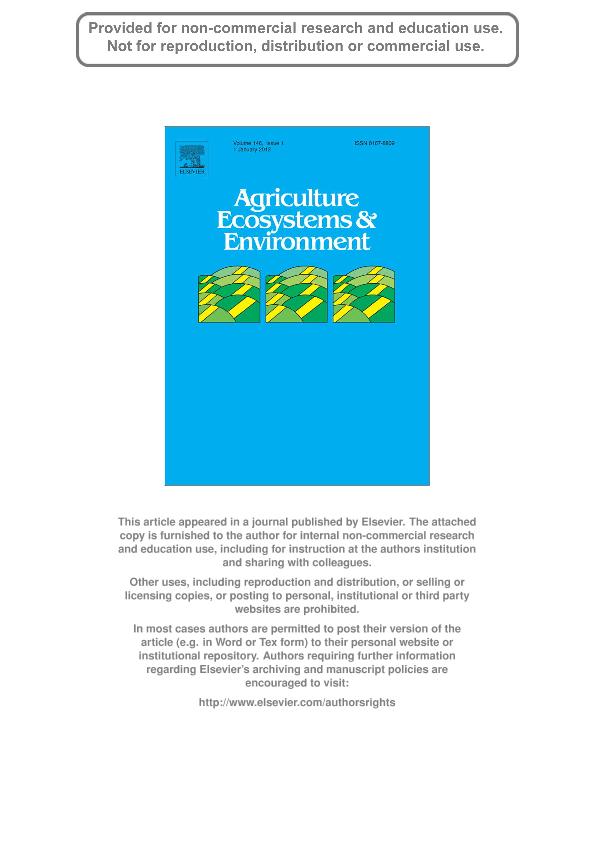Artículo
Trade-offs between land use intensity and avian biodiversity in the dry Chaco of Argentina: A tale of two gradients
Macchi, Leandro ; Grau, Ricardo Jose Antonio
; Grau, Ricardo Jose Antonio ; Zelaya, Patricia Viviana
; Zelaya, Patricia Viviana ; Marinaro Fuentes, María Sofía
; Marinaro Fuentes, María Sofía
 ; Grau, Ricardo Jose Antonio
; Grau, Ricardo Jose Antonio ; Zelaya, Patricia Viviana
; Zelaya, Patricia Viviana ; Marinaro Fuentes, María Sofía
; Marinaro Fuentes, María Sofía
Fecha de publicación:
07/2013
Editorial:
Elsevier
Revista:
Agriculture, Ecosystems And Environment
ISSN:
0167-8809
Idioma:
Inglés
Tipo de recurso:
Artículo publicado
Clasificación temática:
Resumen
Studies to assess the relationship between agriculture production and biodiversity conservation usually focus on one gradient ranging from a natural reference land cover type (typically forest) to an intensive productive land use. However, many semi-arid ecoregions such as the dry Chaco are characterized by a mosaic of different land covers, including natural grasslands and woody vegetation with different degrees of transformation, frequently aimed at meat production. We analyzed the associations between avian biodiversity and meat productivity of forest, natural grasslands, three types of livestock production systems, and soybean crops in northern Argentina dry Chaco; an area of c. 19 million ha characterized by high conservation value and rapid land use change. A Generalized Lineal Model analysis of reports and publications quantified a meat productivity range in which soybean (the less diverse land cover type) doubles the most efficient livestock systems, and is eight times more productive than the widespread puestos system. A multidimensional scaling ordination identified two independent gradients of bird's response to increasing land use intensity, respectively from protected forests and from natural grasslands, to highly transformed systems. Along both gradients avian richness and density sharply declined in the transition from semi-natural land covers to planted pastures and similarity to native grasslands and protected forests decreased exponentially. Along the “grasslands gradient”, bird richness and density presented a unimodal response. Maximum likelihood-fitted curves of bird's guilds response to the productivity gradients showed that in the “forest gradient” most guilds decreased exponentially or linearly, whereas in the “grasslands gradient” most guilds peaked at intermediate levels of meat yield. Our results suggest that land sparing strategies can be more efficient to balance agriculture production with the conservation of forest avian diversity, but also that the prevailing “forest oriented” conservation schemes (e.g. Argentine Forest Law) do not capture the complexity of the system and both forests and grassland gradients should be considered in land use planning, possibly including a combination of conservation strategies.
Palabras clave:
Land Use Changes
,
Dry Chaco
,
Trade Off
,
Birds Conservation
Archivos asociados
Licencia
Identificadores
Colecciones
Articulos(CCT - NOA SUR)
Articulos de CTRO.CIENTIFICO TECNOL.CONICET - NOA SUR
Articulos de CTRO.CIENTIFICO TECNOL.CONICET - NOA SUR
Citación
Macchi, Leandro; Grau, Ricardo Jose Antonio; Zelaya, Patricia Viviana; Marinaro Fuentes, María Sofía; Trade-offs between land use intensity and avian biodiversity in the dry Chaco of Argentina: A tale of two gradients; Elsevier; Agriculture, Ecosystems And Environment; 174; 7-2013; 11-20
Compartir
Altmétricas



